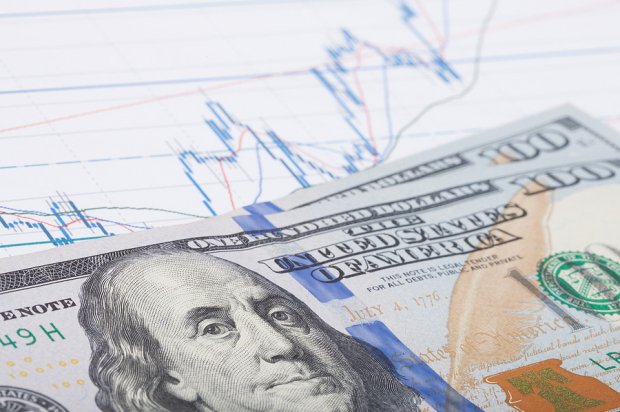Major U.S. indexes like the S&P 500 and the tech-heavy Nasdaq have given a negative return of 2.43% and 6.43%, respectively, so far this year. However, the Dow has managed to rise by 0.08%. Investors are jittery due to President Trump’s aggressive tariff policies with major trading partners and its impact on the U.S. economy at a time when the inflation rate is already elevated. Poor domestic reports and rising geopolitical tensions also remain concerns for market participants.
The Federal Reserve’s preferred inflation gauge, the personal consumption expenditure (PCE) increased by 0.3% in January and showed a 2.5% annual rate. Analysts are concerned over President Trump’s tariff plans which could drive inflation back up. Personal income rose by 0.9%, whereas personal spending unexpectedly declined by 0.2% in January.
The sharpest monthly fall in personal spending since February 2021 reflects the concerns of average Americans about future economic conditions despite higher earnings. According to Institute of Supply Management (ISM) reports, manufacturing and services PMI (purchasing managers’ index) for February came in at 50.3 and 53.5 compared to 50.9 and 52.8 in January. Any reading above 50 indicates expansion in service activities. Widespread layoffs of federal workers in the new Trump administration could potentially raise unemployment.
Amid such volatile market conditions, risk-averse investors who seek returns subject to low risk may opt for large-cap value mutual funds like BNY Mellon Dynamic Value Fund DAGVX, Putnam Large Cap Value PEYAX and AB Large Cap Value ABVAX as their major holdingsto achieve their objective.
While mutual funds investing in value stocks have the potential to deliver higher returns and exhibit lower volatility compared to growth and blend counterparts, large-cap funds usually provide a safer option than small-cap or mid-cap funds. Thus, investors may look for large-cap value funds to earn in a moderate-return, volatile environment.
Value funds generally invest in stocks that tend to trade at a price lower than their fundamentals (i.e., earnings, book value, debt-equity) and pay out dividends. Value stocks are expected to outperform the growth ones across all asset classes when considered on a long-term investment horizon and are less susceptible to trending markets.
Meanwhile, large-cap funds have exposure to large-cap stocks that are expected to provide long-term performance history and assure more stability than what mid or small-caps offer. Companies with a market capitalization of more than $10 billion are generally considered large caps. However, due to their significant international exposure, large-cap companies might be affected by a global downturn.
We have thus selected three large-cap value mutual funds that boast a Zacks Mutual Fund Rank #1 (Strong Buy), have positive three-year and five-year annualized returns and minimum initial investments within $5000, and carry a low expense ratio. Notably, mutual funds, in general, reduce transaction costs and diversify portfolios without an array of commission charges mostly associated with stock purchases (read more: Mutual Funds: Advantages, Disadvantages, and How They Make Investors Money).
BNY Mellon Dynamic Value Fund invests most of its assets, along with borrowings, if any, in stocks of companies that have value, sound business fundamentals and positive business momentum evaluated on extensive quantitative and fundamental research by the portfolio manager. DAGVX also invests a small portion of its net assets in foreign equity securities with similar economic features.
Keith Howell Jr. has been the lead manager of DAGVX since Sept. 21, 2021. Most of the fund’s exposure is in companies like Berkshire Hathaway (4.1%), Cisco Systems (3.4%) and Bank of America Corporation (3.2%) as of Nov. 30, 2024.
DAGVX’s three-year and five-year annualized returns are 12.7% and 15%, respectively. DAGVX has an annual expense ratio of 0.93%.
To see how this fund performed compared in its category, and other 1 and 2 Ranked Mutual Funds, please click here.
Putnam Large Cap Value fund invests primarily in large and mid-cap companies, which, according to the fund’s advisors, are undervalued. PEYAX advisors consider undervalued stocks that are out of favor among investors and trading at prices below average earnings and book value.
Darren Jaroch has been the lead manager of PEYAX since Aug. 29, 2012. Most of the fund’s exposure is in companies like Walmart (3.1%), Exxon Mobil (3%) and AbbVie (2.9%) as of Oct 31, 2024.
PEYAX’s three-year and five-year annualized returns are 12.4% and 13.9%, respectively. PEYAX has an annual expense ratio of 0.88%.
AB Large Cap Value fund invests most of its assets, along with borrowings, if any, ina diversified portfolio of equity securities of large-cap companies. ABVAX advisors invest in companies that are undervalued, using their own fundamental value approach.
Cem Inal has been the lead manager of ABVAX since March 7, 2016. Most of the fund’s exposure is in companies like Walmart (4%), UnitedHealth Group (3.8%) and Wells Fargo (3.4%) as of Aug. 31, 2024.
ABVAX’s three-year and five-year annualized returns are 10.9% and 12.1%, respectively. ABVAX has an annual expense ratio of 0.94%.
Zacks’ free Fund Newsletter will brief you on top news and analysis, as well as top-performing mutual funds, each week. Get it free >>
Want the latest recommendations from Zacks Investment Research? Today, you can download 7 Best Stocks for the Next 30 Days. Click to get this free report
Get Your Free (ABVAX): Fund Analysis Report
Get Your Free (PEYAX): Fund Analysis Report
Get Your Free (DAGVX): Fund Analysis Report
This article originally published on Zacks Investment Research (zacks.com).
Zacks Investment Research

